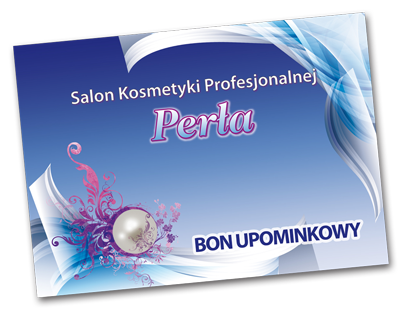Czy Listerine pomaga na pryszcze? Wszystko, co musisz wiedzieć
12 Surprising Listerine Mouthwash Uses for Common Skin Problems
Listerine is perhaps the most widely used mouthwash nowadays, but it was originally created as a surgical antiseptic in 1879. (1) It helps kill oral bacteria to reduce plaque buildup inside the mouth and thereby fights bad breath as well as oral infections. (2)
But there is more to Listerine than just these uses.
Listerine contains alcohol, phenolic compounds, and a mixture of essential oils that exhibit antibacterial, antifungal, and anti-inflammatory properties that can be utilized for a variety of purposes, rather than just oral hygiene.
Mighty Patch Invisible + - Najcieńsza łatka na pryszcz
Mighty Patch Invisible + to niewiarygodnie cienka łatka na pryszcze o matowym wykończeniu. Jest wykonany z hydrokoloidu klasy medycznej, który delikatnie wyciąga całą maź uwięzioną w porach. To całkowicie naturalny, niedrażniący i bezpieczny dla skóry plaster na pryszcze, który łatwo stapia się ze skórą i maskuje niedoskonałości. Wyciąga wszelkie zanieczyszczenia z trądziku i pomaga w szybszym gojeniu. Ta lekka łatka na pryszcze ma o 50% większą moc pochłaniania mazi i zmniejsza widoczność pryszczów. Chroni trądzik i pryszcze przed brudem i zanieczyszczeniami oraz zapobiega trzaskaniu, zrywaniu i ściskaniu, aby uniknąć blizn i infekcji. Silniejszy klej sprawia, że jest odporny na drgania. Opakowanie zawiera 39 plastrów i są one dostępne w dwóch rozmiarach.
Plusy
- Bardzo cienki
- Wszystko naturalne
- Nie irytujące
- Bezpieczny dla skóry
- Łatwo się miesza
- Lekki
- 50% większa moc pochłaniania gruzu
- Odporne na pękanie
- Wolne od okropności
- Wegańskie
- Bez narkotyków
- Żadnych ostrych chemikaliów
Cons
OŠETRENIE PARODONTU
Parodontálne ochorenie môže liečiť len zubný lekár. Pokiaľ máte začervenané, krvácajúce ďasná, opuch alebo vás bolia zuby, rýchlo sa objednajte ku svojmu zubnému lekárovi!
Diagnóza
Po stanovení diagnózy zubným lékárom, napr. vrátane závažnosti parodontitídy, by mal nasledovať štrukturovaný koncept liečby pacienta s parodontitídou:
Krok 1: Základ
Prvým krokom je edukácia v oblasti ústnej hygieny a rizikových faktoroch a odborné odstránenie zubného plaku a zubného kameňa nad líniou ďasien.
Krok 2: Terapia súvisiaca s príčinou
Vo fáze 2 sa odstraňuje biofilm a zubný kameň pod líniou ďasien (subgingiválne) a v parodontálnych vačkoch.
Krok 3: Chirurgická liečba
Probiehajú priebežné kontroly a pokiaľ nie je liečba dostatočne účinná, možno zvážiť chirurgický zákrok.
Krok 4: Doplňujúca liečba parodontózy
Parodontóza je chronické ochorenie. Po aktívnej parodontálnej liečbe je cieľom udržať dosiahnutú stabilitu stavu parodontu a v ideálnom prípade zabrániť ďalšiemu vývoju parodontózy. K tomu slúži osvojenie a prijatie hygienických návykov v starostlivosti o ústnu dutinu a pravidelné kontroly zubov a ďasien.
COSRX Acne Pimple Master Patch - Najpopularniejszy
COSRX Acne Pimple Master Patch to najpopularniejszy dostępny obecnie plaster na pryszcze. Przylega do pryszcza - bez względu na to, gdzie się wybierasz i cokolwiek robisz, nie musisz martwić się o odpadanie łaty hydrokoloidowej. Jest dostępny w trzech różnych rozmiarach. Przyspiesza gojenie, jednocześnie utrzymując nawilżenie dotkniętego obszaru.
Plusy
- Zatwierdzony przez FDA
- Zatwierdzony przez koreańskie Ministerstwo Bezpieczeństwa Żywności i Leków
- Wodoodporny
- Zmniejsza ryzyko powstawania blizn
Cons

Jak zapobiegać pryszczom?
Trądzik na czole – dlaczego się pojawił?
Pryszcze to schorzenie dermatologiczne. Pojawiają się one na ciele zazwyczaj tam, gdzie partie skóry wydzielają naturalny łój. Występują w formie grudek, torbieli ropnych, zaskórników, wągrów, krostek, ale też… blizn. Pryszcze ropne mogą z kolei wiązać się z nieprawidłową dietą, a także złym trybem życia. Mało tego trądzik na plecach, na twarzy czy też na brodzie może świadczyć o:
- zaburzeniach hormonalnych lub immunologicznych,
- przeroście gruczołów łojotokowych,
- nadmiernym rogowaceniu skóry,
- bakteriach i wirusach w organizmie,
- uwarunkowaniach genetycznych,
- stanie zapalnym skóry.
Chcesz wiedzieć, jak przeprowadzić skuteczne usuwanie pryszczy na czole? Istnieją naturalne sposoby na trądzik, które pomogą pozbyć się kłopotliwej dolegliwości! A może zainteresuje cię także ten artykuł o domowych sposobach na ból żołądka?
1. Jedz zdrowo!
Co jest najlepsze na trądzik? Otóż, najlepsze domowe sposoby na pryszcze to… prawidłowe odżywianie się! Właśnie w tym punkcie tkwi najczęściej problem, jeżeli chodzi o syfy na twarzy. Koniecznie zrezygnuj z części pokarmów, aby zminimalizować zmiany na skórze i nie doprowadzić do tego, że jeszcze mocniej się one… nasilą! Z czego lepiej zrezygnować?
Aby jak najlepiej pozbyć się trądziku, koniecznie wypijaj napary z ziół (np. rumianku czy bratka polnego). Ziołowa detoksykacja oczyści dolegliwości, jakie związane są z nieprawidłową przemianą materii. Pamiętaj również o tym, że pryszcze ropne mogą pojawiać się, bo nie tolerujesz jakiegoś składniku pokarmowego! Koniecznie zweryfikuj więc, co może być głównym źródłem problemu w diecie.
2. Nawadniaj się!
Woda to życie! I nie bez powodu właśnie tak się o niej mówi. Zbilansowaną dietę należy uzupełnić o nawadnianie organizmu, najlepiej niegazowaną wodą źródlaną. Im więcej będziesz wody wypijać, tym lepiej będzie wyglądała cera – odzyskując blask i piękny koloryt. Pamiętaj, że woda wypłukuje toksyny z organizmu, a także poprawia krążenie i wpływa na całą kondycję naszej skóry. Picie wody i codzienne korzystanie z jej właściwości to szybkie sposoby na uporanie się z trądzikiem. Sprawdź także ten artykuł z domowymi sposobami na cieknący katar.

 U nas zapłacisz kartą
U nas zapłacisz kartą
